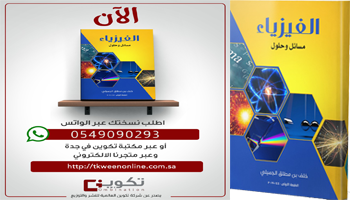أهلا وسهلا بك إلى ملتقى الفيزيائيين العرب.
أهلا وسهلا بك زائرنا الكريم، إذا كانت هذه زيارتك الأولى للمنتدى، فيرجى التكرم بزيارة صفحة التعليمـــات، بالضغط هنا.
كما يشرفنا أن تقوم بالتسجيل بالضغط هنا إذا رغبت بالمشاركة في المنتدى، أما إذا رغبت بقراءة المواضيع والإطلاع فتفضل بزيارة القسم الذي ترغب أدناه.
| ملتقى الفيزيائيين العرب > منتديات أقسام الفيزياء > منتدى الفيزياء النووية | ||
| URANIUM MINERALS | ||
| الملاحظات |
|
|
أدوات الموضوع | انواع عرض الموضوع |
|
#1
|
|||
|
|||
|
Shown below is a partial list of radioactive minerals which can be found in nature.
Uraninite (combined UO2and UO3; 50-85 percent U308). Uraninite is a naturally occurring uranium oxide with cubic or octahedral crystal form. It has a specific gravity of 8-10.5 (iron = 7.85), a grayish-black color sometimes with a greenish cast and a hardness of 5-6, about the same as steel. Its streak3 is black. Its most widespread occurrence is in pegmatites , in which it is found in small amounts, throughout the world. However, it is also an important constituent of nearly all important primary deposits, occurring closely associated with its massive variety, pitchblende. Davidite (rare earth-iron-titanium oxide; 7-10 percent U3O8). Davidite is a dark brown to black mineral with a glassy to submetallic luster. It has about the same hardness as pitchblende (5-6) and is somewhat lighter in weight (specific gravity, 4.5). It occurs most commonly in angular, irregular masses, sometimes with crystal outlines, but never in round, botryoidal shapes like pitchblende. When it is exposed to weathering, a thin yellow-green coating of carnotite or tyuyamunite may form on its surface. A general term for a mixture of secondary uranium minerals like the ones listed below is Gummite. Carnotite (K20*2UO3*V2O5*nH20; 50-55 percent U3O8). Carnotite, a potassium uranium vanadate, is the most important of the secondary uranium ore minerals. It is a lemon-yellow mineral with an earthy luster, a yellow streak, and a specific gravity of about 4. It occurs most commonly in soft; powdery aggregates of finely crystalline material or in thin films or stains on rocks or other minerals. Tyuyamunite (CaO*2UO3 *V2O5*nH20; 48-55 percent U3O8).Tyuyamunite is closely related to carnotite as indicated by the chemical formula, which is the same except that calcium substitutes for the potassium of carnotite. The physical properties of tyuyamunite are the same except for a slightly more greenish color than carnotite and, in some cases, a very weak yellow-green fluorescence not found in carnotite. Torbernite and Meta-torbernite (CuO*2UO3 *P2O5* nH20; 60 percent U3O8) . Torbernite and meta-torbernite are hydrous copper uranium phosphates, the only difference between the two being the number of water molecules present; their physical properties are identical. They have a bright emerald color, a pearly luster, hardness of 2-2 1/2 (about the same as the fingernail), and specific gravity of about 3.5 (a little heavier than quartz). They occur in flat, square, translucent crystals which usually fluoresce with a faint green color. Autunite and Meta-autunite (CaO*2UO3* P2O5* nH2O; 60 percent U308. Reference to the chemical formula will show that these two minerals have the same composition as torbernite, with calcium substituting for copper. Because of this similarity, they are commonly found together, the proportion of torbernite being dependent upon the amount of copper available to the uranium-bearing solutions. In some instances, where copper is completely lacking, only autunite or meta-autunite is formed. Uranophane (CaO*2UO3*2SiO2*6H2O; 65 percent U308 Uranophane is a hydrated calcium uranium silicate containing silica in place of the phosphate of autunite. It is slightly lighter in color and somewhat heavier than autunite (specific gravity 3.85) and has a different crystalline form; it may occur as stains or coatings without apparent crystal form or as finely flbrous or radiating crystal aggregates. Schroeckingerite [NaCa3 (UO2) (CO3)3(SO4)F*1OH20; 30 percent U308]. Schroeckingerite is a complex hydrated sulfate, carbonate, and fluoride of calcium, sodium, and uranium. It has a yellow to greenish-yellow color with a pearly luster, a bright yellow-green fluorescence. It occurs as globular coatings on rock fracture surfaces or as small rounded masses composed of aggregates of flaky crystals distributed through soft rocks or soil. There are a number other fairly radioactive minerals. Some of these minerals contain rare earths in addition to uranium and thorium. Rare earths minerals are those minerals which may contain cerium, dysprosium, erbium, europium, gadolinium, holmium, lanthanium, lutetium, neodymium, praseodymium, samarium, terbium, niobium, and thulium. Here is a partial list of other radioactive minerals: |
«
الموضوع السابق
|
الموضوع التالي
»
| الذين يشاهدون محتوى الموضوع الآن : 1 ( الأعضاء 0 والزوار 1) | |
| انواع عرض الموضوع |
 الانتقال إلى العرض العادي الانتقال إلى العرض العادي |
 الانتقال إلى العرض المتطور الانتقال إلى العرض المتطور |
 العرض الشجري العرض الشجري |
|
|
المواضيع والمشاركات المنشورة لا تعبر عن رأي ملتقى الفيزيائيين العرب ولانتحمل أي مسؤولية قانونية حيال ذلك ويتحمل كاتبها مسؤولية النشر"
الساعة الآن 08:53





